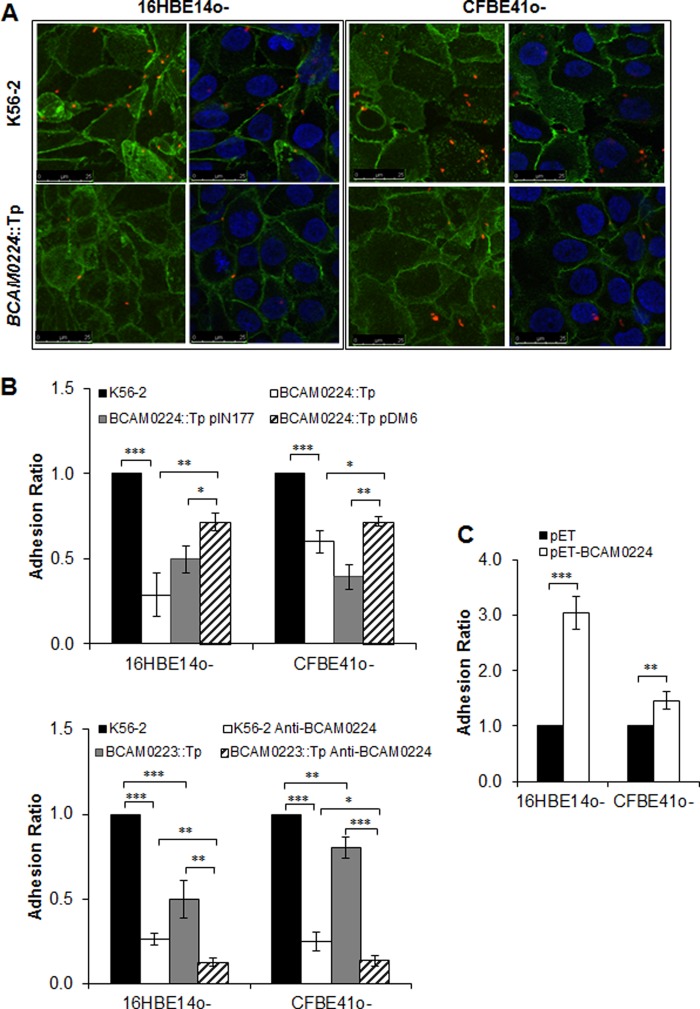FIG 5.
Cellular adhesion. (A) Fluorescence confocal microscopy images of B. cenocepacia K56-2 and the BCAM0224::Tp mutant adhering to 16HBE14o− (non-CF) and CFBE41o− (CF) cells. Images correspond to 3D projections obtained from 0.4-μm confocal slices of a monolayer of cells. Eukaryotic cell plasma membranes and nuclei were visualized by using Alexa 488 (green) and DAPI (blue) fluorophores, respectively; bacteria were labeled with DsRed (red). (B, top) Adherence to 16HBE14o− (non-CF) and CFBE41o− (CF) epithelial cell lines by the BCAM0224::Tp mutant, expressed as a ratio of B. cenocepacia K56-2 adherence (***, P < 0.001). Complementation with BCAM0224 in trans using plasmid pDM6 partially restores the wild-type phenotype. The BCAM0224::Tp mutant harboring empty vector pIN177 was used as a control (**, P < 0.01; *, P < 0.05, respectively). (Bottom) Inhibition of epithelial cell adhesion was achieved by preincubation of B. cenocepacia K56-2 and the BCAM0223::Tp mutant with anti-BCAM0224 antibody (open and striped bars, respectively) (***, P < 0.01; **, P < 0.01; *, P < 0.05). No inhibitory activity was observed with an irrelevant rabbit serum used as a negative control. (C) Adherence to 16HBE14o− (non-CF) and CFBE41o− (CF) cells using E. coli strain BL21 expressing BCAM0224, expressed as a ratio of E. coli cells harboring the empty plasmid (***, P < 0.001; **, P < 0.01).

